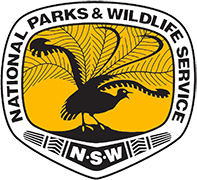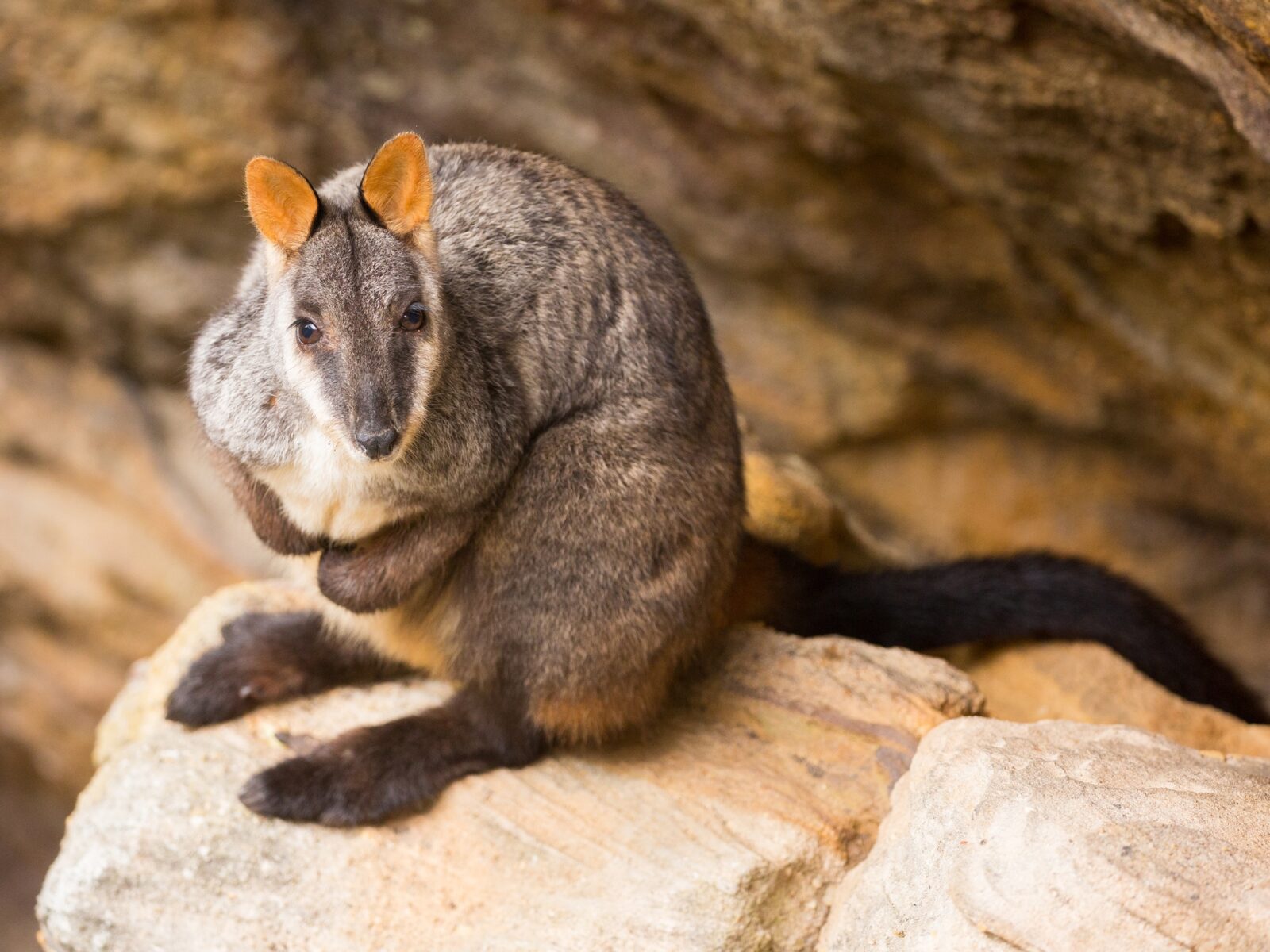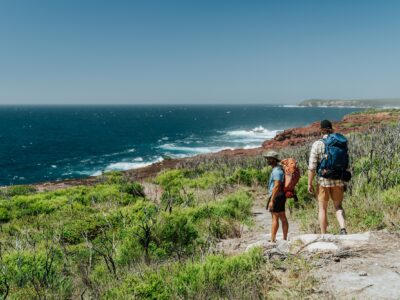There’s something comforting about watching flying foxes sleep – suspended upside down and wrapped tight in their blanket of wings. Footage of rock-wallabies lounging in the sun is also undeniably adorable. It’s no wonder, then, that our NSW National Parks live streams have become something of an internet sensation. Viewers from the far-flung corners of the earth – Sweden, Indonesia, Germany, the US, the UK and Algeria, among other places – have tuned in to our grey-headed flying-fox camera (AKA the bat cam).
View this post on Instagram
Meanwhile, brush-tailed rock-wallaby live stream fans have watched on as drama unfolds on the screen, including this confrontation between the colony of wallabies and a rare spotted-tailed quoll:
View this post on Instagram
-
Why do we use cameras to spy on wildlife?
This entertainment is the by-product of important conservation work that is helping us better understand and protect these species. Live streams, and cameras in general, give conservationists an insight into what animals do when humans aren’t around. They allow us to monitor a species’ habits – things like mating, socialising and their response to changing weather conditions – and track population trends, all with minimal disturbance to the animals themselves. They can also help us check on critters that live in hard-to-access areas (like rock-wallabies) or are nocturnal and tricky to spot, like this cutie:
View this post on InstagramWhen our purpose-built cameras record an animal that has barely been seen for decades, it can be pretty huge news for the people who dedicate their careers to protecting them (the above recording was the first time the New Holland mouse had been spotted in this area for 20 years). And now, through our public live streams, we’re letting you in on the fascinating worlds of threatened species.
To give you even more intel on this vital work, we asked the incredible staff behind our live stream projects to share what makes each species special, and what we can learn from monitoring them in this way.
-
The story behind our bat cam
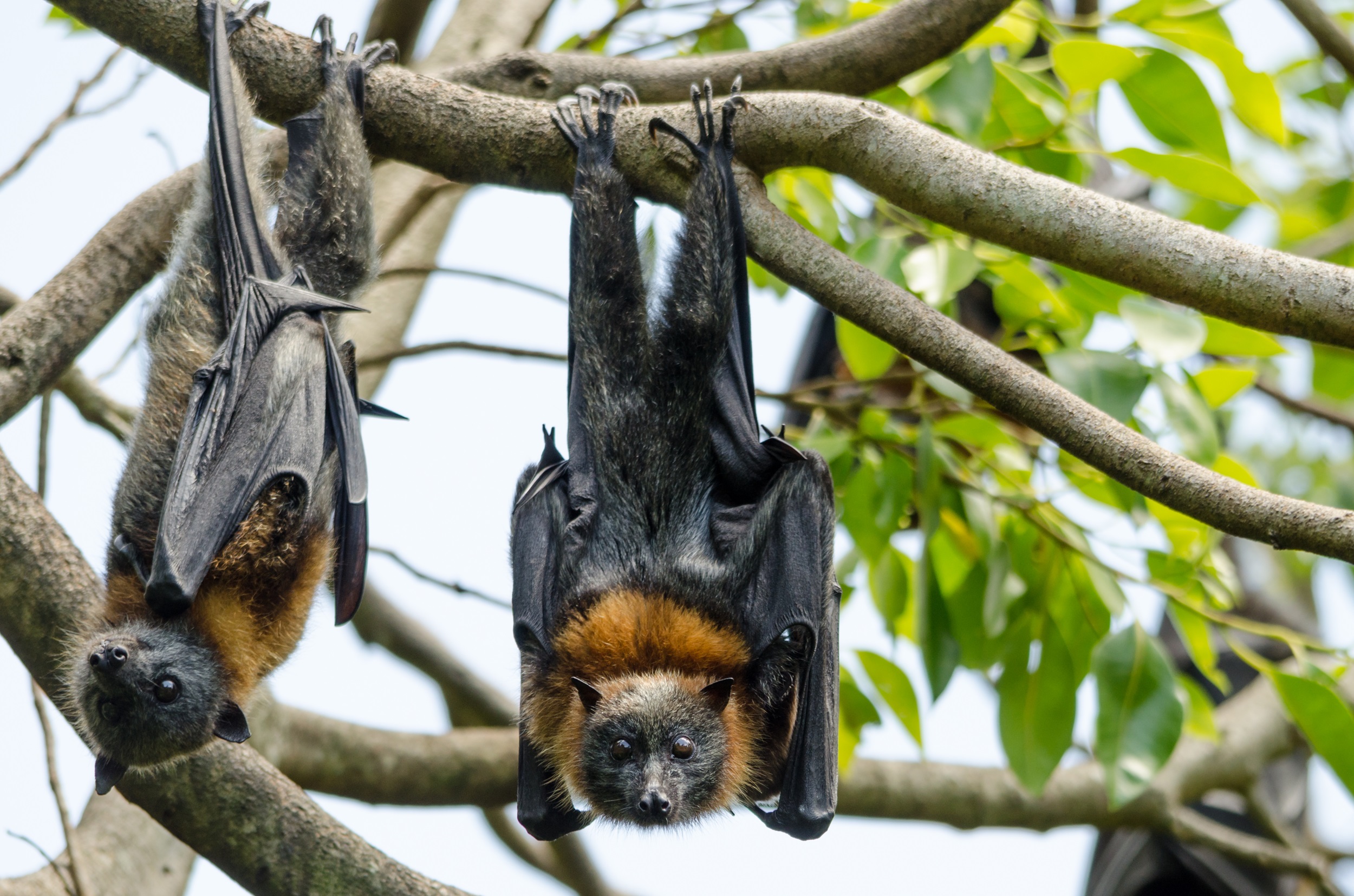 Photo Information
Photo InformationJust hangin’.
Shane Ruming/DCCEEW
Erica Goldsmith is a NSW National Parks Assistant Project Officer who specialises in conservation. She helps manage the Assets of Intergenerational Significance site for the grey-headed flying-fox, overseeing the implementation of the conservation action plan.
What are the main threats faced by the grey-headed flying-fox?
Loss of roosting habitat and foraging sites, heat stress, conflict with humans and electrocution on power lines or entanglement in netting or barbed-wire.Did you know? A roost is a safe place – usually a large tree – where bats rest, breed and hang out.
What makes this flying-fox roost special?
The grey-headed flying-fox is a threatened species in NSW. This site at Wingham Brush Nature Reserve is a significant roosting and maternity site for the species, and is one of the only permanent roosts used by grey-headed flying-foxes between the Hunter region and Bellingen. Wingham Brush Nature Reserve has our strongest protections in place by being declared an Asset of Intergenerational Significance for the grey-headed flying-foxes that seek refuge here.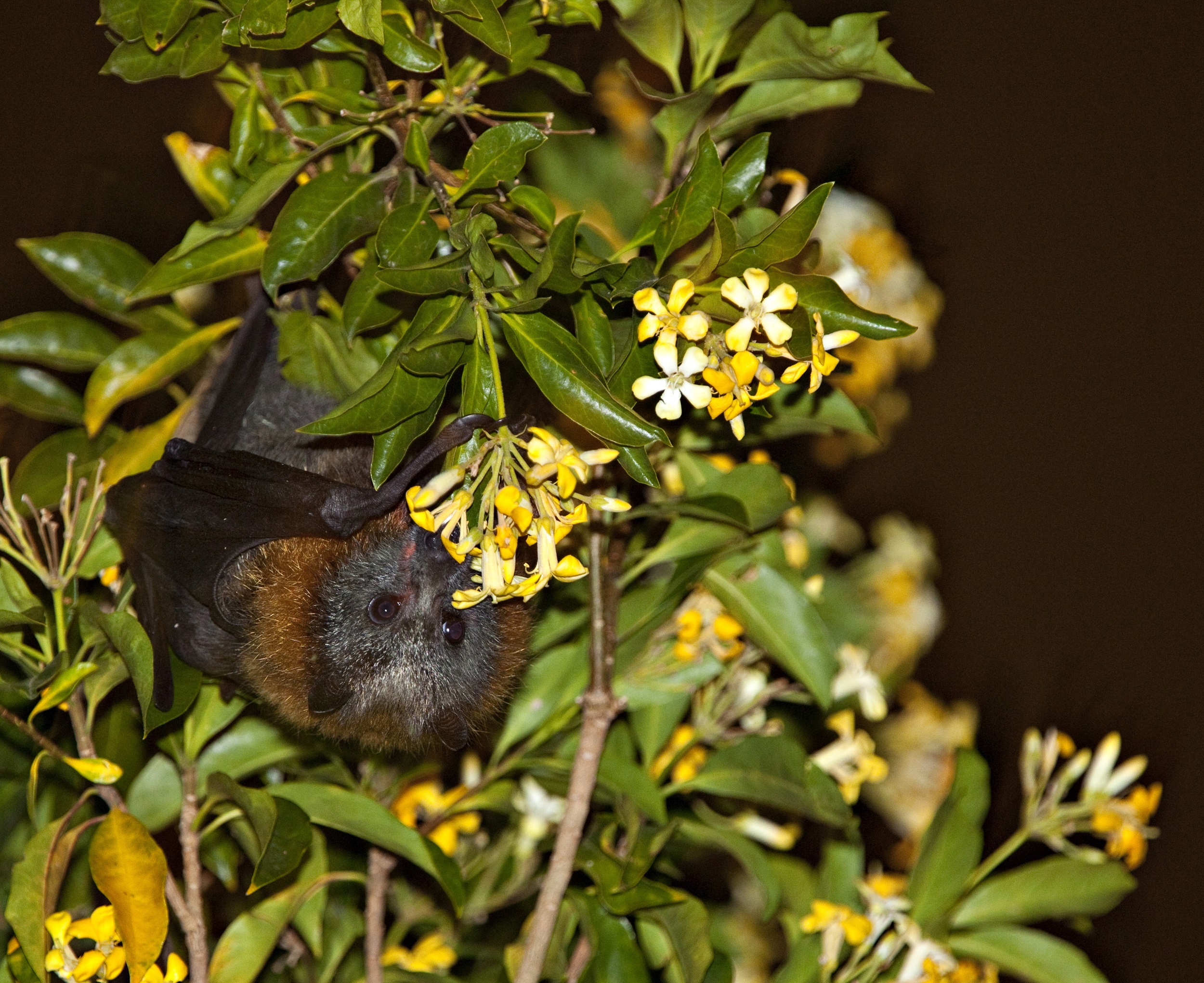 Photo Information
Photo InformationYum!
Rosie Nicolai/DCCEEW
How do live streams support conservation efforts? What can we learn about the species by monitoring them in this way?
The live stream camera allows viewers to connect with flying-foxes and learn more about their behaviours and ecology from wherever they are in the world. It also enables NSW National Parks staff to monitor the colony remotely, providing insight into mating, social and heat response behaviours. There is potential for this camera to support research efforts to improve our understanding of how changing weather patterns affect the flying-fox colony and how they respond.What’s your favourite grey-headed flying-fox fact?
They roost by day and fly out at night to feed, guided by excellent night vision, often at distances up to 30km from roosts, and sometimes up to 50km per night. They are the largest flying-fox in Australia with a wingspan of up to one metre. Photo Information
Photo InformationWinging it.
Shane Ruming/DCCEEW
Why did you choose to specialise in this animal?
This species is often misunderstood because they can be noisy, messy or smelly. But, they are highly mobile pollinators that forage and feed on many native plants – particularly eucalypts. They carry pollen further than any other pollinator and disperse seeds further than most seed dispersers. They play a crucial role in supporting the health of native forests.Watch the bat cam:
-
The story behind our rock-wallaby cam
 Photo Information
Photo InformationLights, camera, action!
Jenolan Caves/DCCEEW
Adam Fawcett is a NSW National Parks Project Officer who specialises in threatened species. He is the site manager for the Green Gully brush-tail rock-wallaby site and project manager of the rock-wallaby cam.
What are the main threats faced by the brush-tailed rock-wallaby?
The critical threats impacting brush-tailed rock-wallabies include predation by foxes and feral cats, competition for food and habitat from feral goats, and high frequency and high intensity fires. The impacts from fires, feral cats and foxes tend to impact across all populations, while competition from feral goats is a greater problem within western NSW populations, but can be a problem where goat populations erupt within eastern parts of its range.What makes this population special?
The colony monitored by the live streaming camera is part of a broader population within the Green Gully area of Oxley Wild Rivers National Park, with over 60 known brush-tailed rock-wallabies across the landscape. This colony has been part of ongoing studies into the brush-tailed rock-wallaby and the impacts of feral animals, with researchers occasionally turning up on the live-stream, including the radio-collaring of rock-wallabies that occurred in the past 12 months.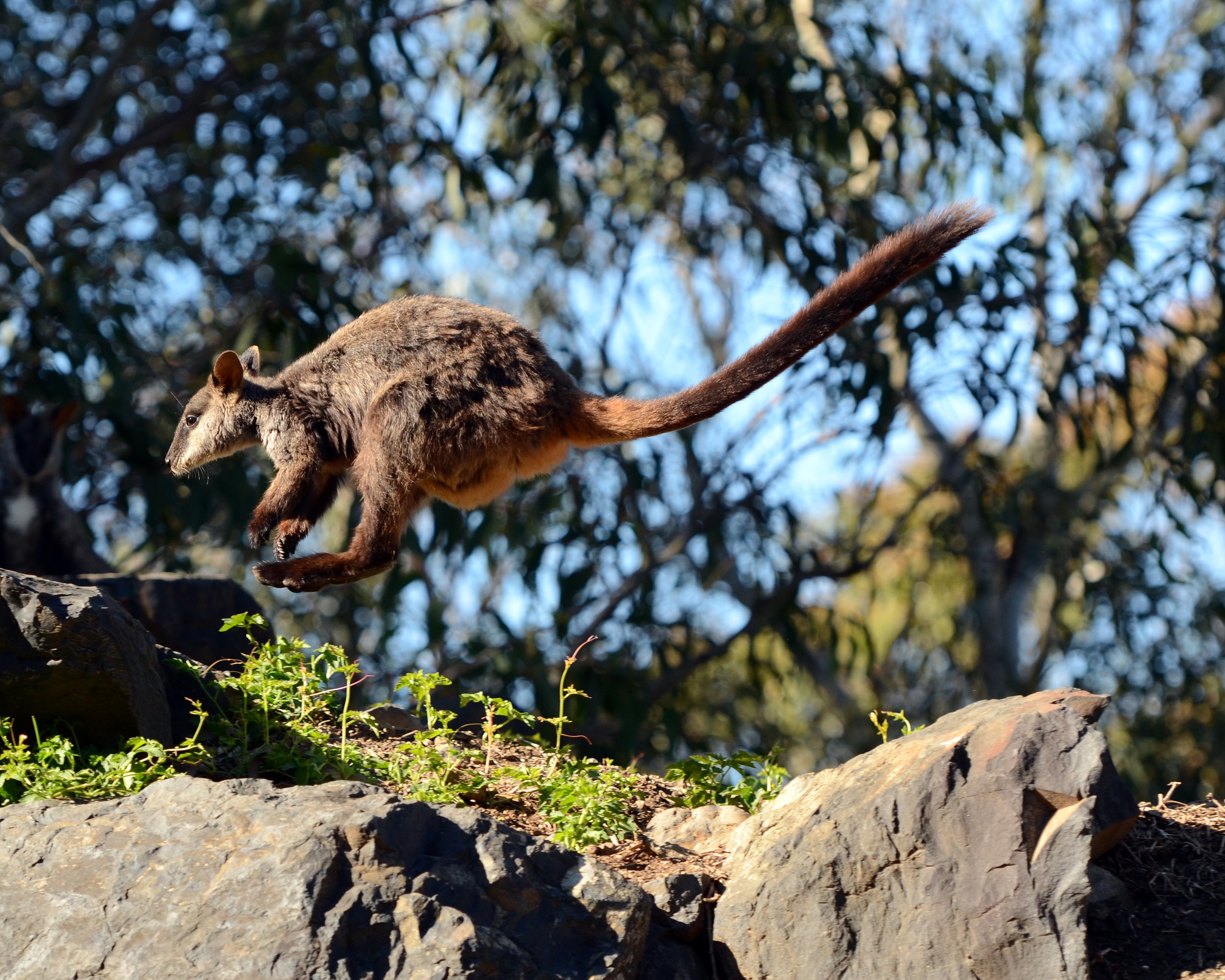 Photo Information
Photo InformationBouncing around.
Gavin Swan/DCCEEW
How do live streams support conservation efforts? What can we learn about the species by monitoring them in this way?
The live streaming of this colony has allowed insights into the behaviour and activity of the rock-wallabies as part of ongoing monitoring with minimal disturbance to the colony. In addition, the camera has also identified when pest animals are impacting the site and allowed for reactive management to occur within a very short timeframe. There have also been other threatened species detected including the spotted-tailed quoll which has made a couple of surprise cameos.The other benefit of the live stream is that it has allowed everyone to observe the rock-wallabies, something which is typically difficult to do given they live in steep, rocky habitat that is often very hard to access and they tend not to hang around when people are in the area.
What’s your favourite brush-tailed rock-wallaby fact?
Brush-tailed rock-wallabies are incredibly adept at getting around the steep rocky habitat in which they live. They have an amazing ability to move around in all three dimensions, to move up steep, almost vertical cliff faces to escape predators – something that is not commonly seen is that rock-wallabies will bounce up into and perch on branches within trees. When they are super active, watching the live stream can give you a real sense of this ability to move within three dimensions across the colony as they scoot and chase one another. Photo Information
Photo InformationJenolan Caves/DCCEEW
Why did you choose to specialise in this animal?
I started working on rock-wallabies in around 2002 as part of the NSW Fox Threat Abatement Plan, a precursor to the current Saving Our Species program. I was able to contribute to the state recovery team for this species and my involvement in these recovery efforts led to an ongoing interest and management of the species for NSW National Parks. This has continued in my role as a threatened species officer within the Northern Tablelands. I also currently represent NSW National Parks on the national recovery team for this species.Watch the brush-tailed rock-wallaby cam:
Now all that’s left for you to do is grab the popcorn and enjoy the show!
Inspired to get out and do some real life wildlife spotting in national parks? Do your bit for conservation by admiring animals from a distance and keeping your snacks to yourself.
